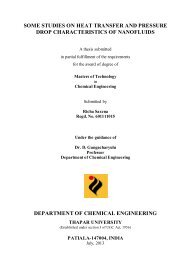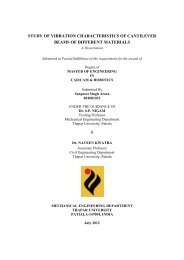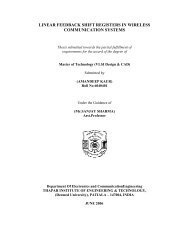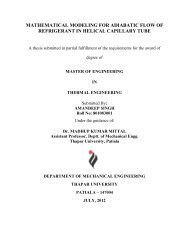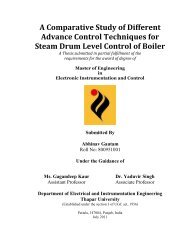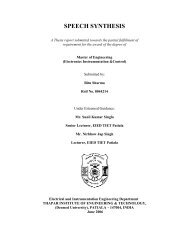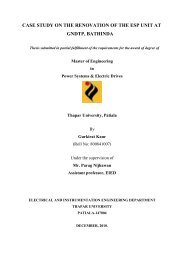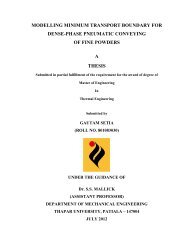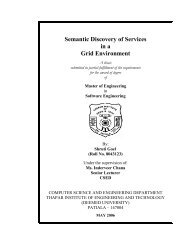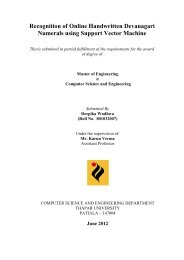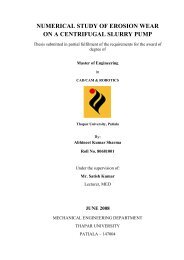from indigenous fermented foods and human gut ... - Thapar University
from indigenous fermented foods and human gut ... - Thapar University
from indigenous fermented foods and human gut ... - Thapar University
Create successful ePaper yourself
Turn your PDF publications into a flip-book with our unique Google optimized e-Paper software.
59<br />
Chapter III Material <strong>and</strong> methods<br />
time 0 h <strong>and</strong> after 24 h of incubation at 37°C to enumerate surviving bacteria as described by<br />
Xanthopoulos et al. (2000).<br />
3.7.3 Determination of antimicrobial potential of probiotic strains<br />
3.7.3.1 Production of H2O2<br />
Overnight grown cultures (10 µl) were spotted onto ABTS-agar plates (2, 2'-azino-bis<br />
(3-ethylbenzothiazoline-6-sulphonic acid)) <strong>and</strong> incubated anaerobically at 37°C for 72 h.<br />
After anaerobic incubation, plates were exposed to the atmosphere. Oxidative coloration of<br />
ABTS by H2O2 was visible as a violet halo surrounding the colony of H2O2 producer<br />
Lactobacillus strains, indicating H2O2 production (Marshall, 1979).<br />
3.7.3.2 Screening for antagonistic activity<br />
The agar spot test as described by Schillinger <strong>and</strong> Lucke (1987) was used for<br />
screening the antagonistic activity of the selected Lactobacillus strains. 10 µl of overnight<br />
Lactobacilli culture were spotted onto modified MRS agar (2 g/l glucose <strong>and</strong> 13 g/l agar) <strong>and</strong><br />
incubated at 37°C for 24 h. These plates were over-layered with MRS soft agar (7.5 g/l agar)<br />
inoculated with ca. 1 x 10 8<br />
CFU/ml of indicator strains. The agar spot test method of Uhlman<br />
(1992) was used to test whether the inhibition zones observed in the screening for<br />
antagonistic activity were due to the bacteriocin production or as a result of acid inhibition.<br />
Briefly, cell-free neutralized supernatants were obtained <strong>from</strong> overnight producer cultures<br />
grown in MRS broth at 37°C. After centrifuging the culture at 7,200 x g for 10 min, the<br />
supernatants were neutralized with sterile 5 M NaOH <strong>and</strong> then boiled for 5 min to inactivate<br />
residual viable cells. The supernatants were tested against the same indicator strains as<br />
mentioned above.



